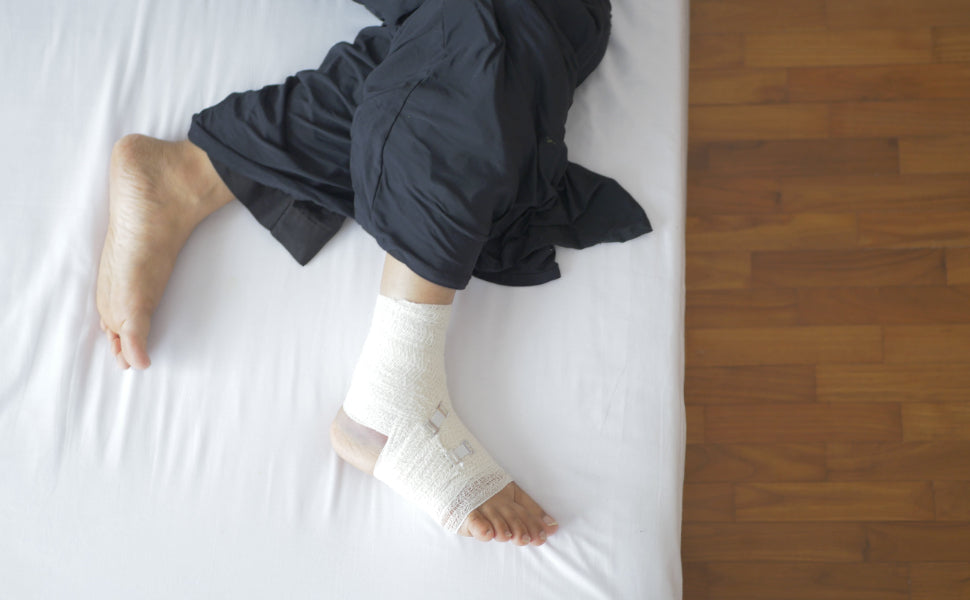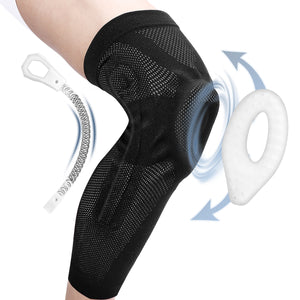Can You Wear Compression Socks at Night?

This article explores in depth the pros and cons of wearing compression socks at night. On the one hand, compression socks can effectively promote blood circulation and ease the swelling of the legs, which bring many benefits for night rest. On the other hand, we analyze the problems that can arise from wearing compression stockings at night and provide detailed solutions. Based on this comprehensive consideration, Fivali aims to help readers decide on the most suitable choice for themselves and to use compression socks in a scientific and sensible way of life.
Explanation of Compression Socks
Compression socks are like fitting your legs with a pair of “tights” that apply just the correct amount of pressure to help the blood circulate better. The compression socks are most comfortable at the ankles and reduce gradually upwards, which helps the blood flow from the legs back to the heart and ease symptoms such as varicose veins and edema as well.
Compression socks effectively stimulate the movement of blood flow back to the heart by placing a graduated compression on the veins, muscle and tendons of the legs. This compression action can help lower the risk of thrombosis and ease swelling, pain and discomfort caused by varicose veins, deep vein thrombosis, lymphedema and other diseases. The compression socks are designed to help increase blood circulation, reduce leg fatigue and increase quality of life.
The compression classes available in these stockings are different and are usually represented in millimeter of mercury (mmHg at the moment). The upper the compression level, the stronger the compression. People with mild inflammation or fatigue may prefer lower compression levels, while people with venous incompetence or related medical requirements will be able to use a higher level of compression.
The compression socks are available in a variety of styles, from knee-high to over-the-knee stockings, and even pantyhose are available to fulfill the requirements of various different groups of users. Selection of length is determined by the particular needs and desires of the wearer. With a view to elevate the fit experience, some of the compression socks incorporated more specifics in their design. For example, increasing topical padding to provide pressure relieving and staying dry by choosing moisture wicking fabrics to boost athletic comfort and expression on the run.
A useful tool for controlling a variety of leg-related conditions and encouraging healthy circulation is compression socks. Athletes, frequent travelers, those with particular medical issues, and people who spend a lot of time standing or sitting use them. It is necessary to realize that compression socks should fit right in order to be effective at all. Included in this is consideration of factors including calf circumference, ankle size, as well as feet length. Your healthcare provider can help you determine the right size and fit.
Wearing Compression Socks at Night: Is It Recommended?
You can wear compression socks at night, but you need think about a few things beforehand. Following are the advantages and disadvantages of putting on compression socks for nighttime.
Pros:
- Improved Circulation: Compression socks at night can help provide improved circulation, in particular if your feet are sore, swollen or have poor circulation while you sleep.
- Reduced Pain and Discomfort: Compression socks that contribute to the relief of symptoms such as nighttime leg cramps, restless leg syndrome as well as sore muscles can cause.
- Recovery and Healing: If you have had a leg injury or surgery, wearing compression socks at night can help with healing by lowering the swelling and facilitating quicker healing from the experience.
- Reduced Risk of Blood Clots: Putting on compression socks at night can lower your chance of getting blood clots, especially if you are sedentary or at a higher risk of deep vein thrombosis.
Cons:
- Discomfort and Sleep Disruption: Some people are likely to find it difficulty in getting to sleep while putting on compression socks, which can lead to sleeping trouble or disorganized breathing habits.
- Skin Irritation: Chronic application of compression socks, including during sleep, can easily lead to skin sensitization, provoking itchiness, redness, swelling and other uncomfortable symptom.
- Incorrect Fit: Compression socks have to fit as ill-fitting socks can cause discomfort, restrict blood flow and have the potential to aggravate pre-existing illnesses on the leg.
It is recommended that you contact with a healthcare practitioner before using compression socks at night, especially if you have any underlying medical ailments or concerns. Based on your unique needs, they can advise you on the best compression level, fit, and duration of use.
Tips
Following are additional tips for falling asleep in compression socks at bedtime:
- Consult with a Healthcare Professional: For secure and effective use of compression socks, it is advisable to discuss with your doctor before putting them on at night time for use from the start. According to your specific situation, your doctor will recommend the most suitable compression grade, dimension and wearing time for you.
- Select the Appropriate Size: Compression socks must fit correctly to be most effective and be comfortable. To discover the correct size, measure your calf circumference, ankle size and foot length. Improperly sock fitting can contribute to pain, restricting circulation, as well as exacerbating underlying diseases or illnesses as well.
- Wear Them on a Daily Basis: Frequently worn compression stockings, even at night, help preserve healthy blood flow and lower your chances of developing blood clots and other problems.
- Experiment with Several Styles: There are many types of compression socks to pick out, from lengths to fabrics to compression levels. In order to find the most comfortable and suitable style for you, it is worthwhile to try a few to get the “perfect sock” specially for you as well.
- Keep Them Clean: To maintain the elasticity and hygiene of your compression socks, clean them regularly. Never forget to follow the product manual for washing and drying in order to prolong their service life.
- Use More Padding: However, if you are uncomfortable with compression socks at night, trying to add some padding or cushioning at the pressure points can improve your wearing comfort.
Reference
Can You Sleep in Compression Socks?













